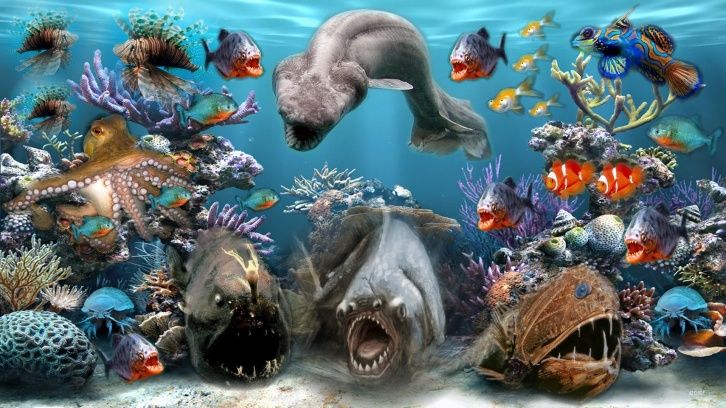
FAQ About Ocean Life

What is the process of photosynthesis in the ocean?
Photosynthesis in the ocean is the process by which marine plants and algae, known as phytoplankton, convert sunlight, carbon dioxide, and nutrients into energy-rich organic compounds. Here is an overview of the process of photosynthesis in the ocean:
Sunlight Availability: Photosynthesis in the ocean relies on the availability of sunlight. Sunlight penetrates the water surface and provides the energy necessary for the process to occur. The intensity and depth of sunlight penetration can vary depending on factors such as water clarity, cloud cover, and the angle of the sun.
Phytoplankton: Phytoplankton are microscopic, single-celled organisms that form the foundation of the oceanic food web. They contain pigments, such as chlorophyll, which absorb sunlight.
Absorption of Light: Phytoplankton cells absorb sunlight, primarily in the blue and red wavelengths, using their pigments. The absorbed light energy is then used in the subsequent steps of photosynthesis.
Carbon Dioxide Uptake: Phytoplankton take up carbon dioxide (CO2) from the surrounding water. CO2 is an essential component for the synthesis of organic compounds.
Photosynthetic Reactions: Within the phytoplankton cells, photosynthetic reactions occur in specialized structures called chloroplasts. These reactions consist of two main phases:
- Light-Dependent Reactions: In this phase, light energy is used to split water molecules, releasing oxygen (O2) as a byproduct. The energy captured from the light is temporarily stored in energy-rich molecules like ATP (adenosine triphosphate) and NADPH (nicotinamide adenine dinucleotide phosphate).
- Calvin Cycle (Light-Independent Reactions): The ATP and NADPH generated in the light-dependent reactions are used in the Calvin cycle. In this phase, carbon dioxide from the surrounding water is converted into organic molecules, particularly glucose, through a series of biochemical reactions. These organic molecules serve as energy sources for phytoplankton and other organisms in the marine food chain.
Release of Oxygen: As a result of photosynthesis, phytoplankton release oxygen into the water as a byproduct. This oxygen contributes to the oxygen supply in the ocean and is vital for supporting marine life.
